Capacity:
- 47 I/O lines
- 7 tiles
- 14 sockets for Tibbit modules
- 14 sockets for Tibbit connectors
- 1 extra socket for Tibbit #37 (RF connector)
Compatible with:
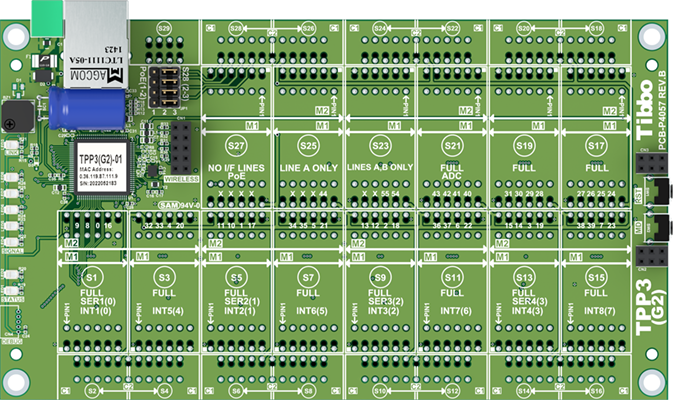
Size 3 Tibbo Project PCB is a Tibbo BASIC/C-programmable board belonging to the Tibbo Project System (TPS) line. The board offers substantial speed and functionality improvements over its predecessor — the original TPP3 board.
Offering 7 tiles for a total of 14 Tibbit module and 14 Tibbit connector sockets, the TPP3 can be used to create TPS configurations with up to four full serial ports, up to 25 relays, or up to 47 control lines, such as opto-inputs, PWMs, or open-collector outputs.
This product can be used as a bare board or assembled into a size 3 Tibbo Project Box (TPB3).
Size 3 Tibbo Project PCB is ideal for applications requiring no human-machine interface while calling for a significant number of I/O lines and functions. The TPP3 can be used to replace dumb PLC controllers or work as a safety, security, or access control device. The board is also ideal for factory, lab, shop, building, hotel, and home automation projects.
The TPP3 board is supported by AppBlocks, a flowchart-based, no-code, in-browser application development platform.
High-performance ARM CPU
Optional Wi-Fi connectivity
(with the WA2000 add-on module)
Optional BLE (Bluetooth Low Energy) connectivity (with the WA2000 add-on)
5V power (use power Tibbits for
other power arrangements)
Supports over-the-air (OTA) firmware
updates (with the WA2000 add-on)
Supported by the AppBlocks no-code application development platform
Optional 4G/LTE cellular connectivity
(requires Tibbit #45)
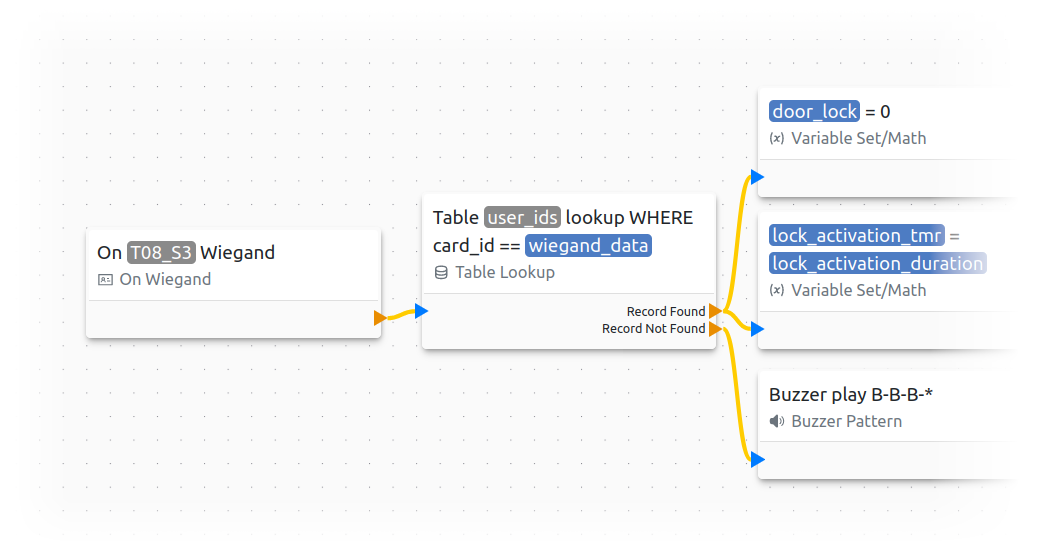
No-code software development is the future because no one has the time to write and debug applications line-by-line.
Enters AppBlocks, our flowchart-based, no-code, in-browser application development system for Tibbo Project System devices.
In AppBlocks, supported features are represented by functional blocks, which you drag onto and interconnect inside a project canvas. This draw-an-application approach allows you to quickly create complete automation and IoT applications for security, access control, building automation, data collection, precision agriculture, and other fields.
Head to appblocks.io and create your first TPS application today!
Anyone who has ever deployed a device in the field knows that the process often gets stuck over silly little things, like the IP address configuration. Enters the Loadable User Interface System (LUIS), our wireless configuration solution for Tibbo devices.
Equip your TPS system with the WA2000 Wi-Fi/BLE add-on, enable LUIS in your AppBlocks application, and define what settings will be exposed through this interface. A typical list includes the IP address, DHCP, Wi-Fi SSID, password, and other basic parameters.
Now your users will be able to configure these essential settings via a Bluetooth Low Energy (BLE) connection from the LUIS app (iOS, Android, web).
It gets even better: The TPP3(G2) also supports over-the-air firmware upgrades via BLE using our Tibbo Updater app (iOS, Android, web)!
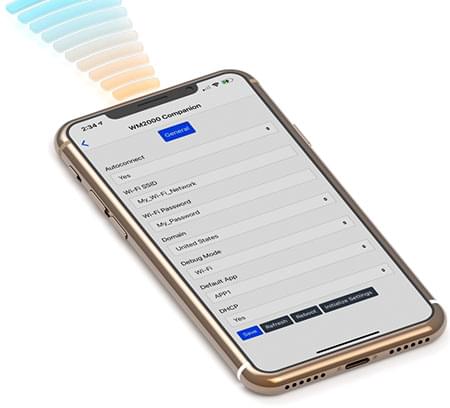
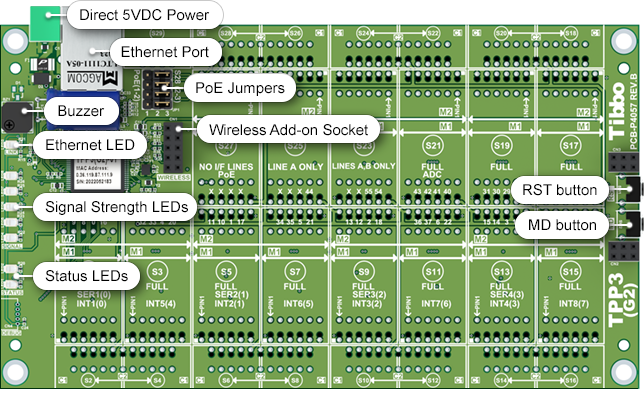
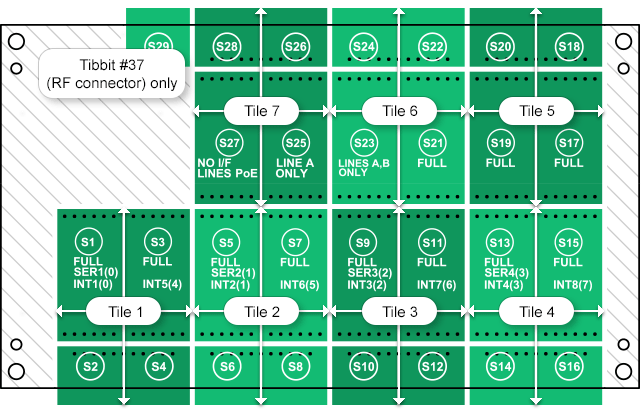
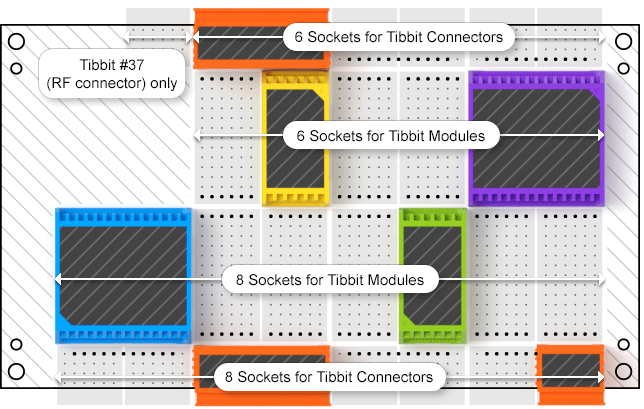
Capacity:
Compatible with:
Specifications:
*The TPP3(G2) does not support the combination of the 7 bits/character mode and the "none" parity mode.
See Also:
Create powerful, network-enabled applications in Tibbo BASIC and Tibbo C. Learn more...
Platform objects:
Function Groups: String functions, trigonometric functions, date/time conversion functions, encryption/hash calculation functions, and more.
Variable Types: Signed and unsigned 8-bit, 16-bit, and 32-bit types; floating point and string types; user-defined arrays and structures.
| TiOS Firmware | tios-tpp3w(g2)-4_02_02.bin — supports the WA2000 add-on module; uploadable using Device Explorer* Files for Over-the-Air (OTA) firmware updates can be produced here. |
| SoI Firmware | soi_application_4_36_TPP_3_G2_f2447573fd.bin |
| Documentation | TPP3(G2) Hardware Manual TPP3(G2) Programming Platform |
| CE Certificate | CE Certificate |
| FCC Certificate | FCC Certificate |
* Device Explorer is a part of Tibbo IDE (TIDE) software. It installs alongside TIDE, and you can also install it separately, without installing TIDE. Both TIDE and Device Explorer can be downloaded here.
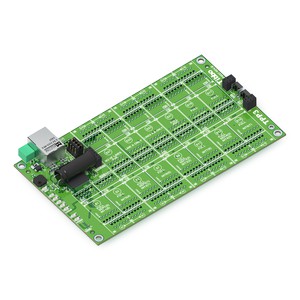
Miniature 802.11a/b/g/n + BLE4.2 board, adds Wi-Fi and Bluetooth Low-Energy (BLE) connectivity to compatible Tibbo modules, boards, and controllers. Easy to use, fully integrated, low-power. Requires only 5 I/O lines to control. Supports over-the-air (OTA) firmware updates.
This device cannot operate by itself. It has to be controlled by one of our compatible products. The LTPP3(G2) does not support this module.